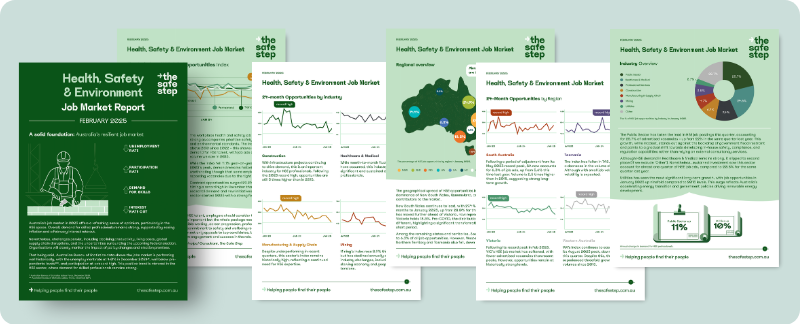Work Health, Safety, Environment & Wellbeing Job Market Report
Health, Safety & Environment Job Market Report
Exclusive data reveals in demand skills & job data
Gain valuable insights into HSE job opportunities with The Safe Step's comprehensive Health, Safety and Environment Job Market Report. This exclusive report offers detailed analysis of HSE career trends and emerging HSE job opportunities across Australia.
Inside this report, you'll discover:
- Which HSE disciplines are experiencing the highest demand
- Regional hotspots with changes to hiring activity
- Industry hiring hotspots for safety professionals
- Top Health, Safety and Environment skills employers need now

Essential insights for employers and professionals
Whether you're building a safety-focused team or advancing your HSE career, this analysis delivers market insights necessary to guide strategic decisions.
The Safe Step's Health, Safety and Environment job opportunities index has carefully tracked HSE employment data since 2015, providing job seekers and employers with accurate Health, Safety and Environment employment forecasts.
Download The Safe Step's Health, Safety and Environment job market report today to access insights that will give you a competitive edge in Australia's dynamic HSE landscape.
Get the Feb '25 report
Australia's HSE job market: February 2025
Australia’s job market in 2025 offers a refreshing sense of optimism, particularly in the
HSE space. Overall, demand for skilled professionals remains strong, supported by easing
inflation and a February interest rate cut.
Nevertheless, challenges persist, including declining productivity, living costs, global
supply chain disruptions, and the uncertainties surrounding the upcoming federal election.
Organisations will closely monitor the impact of policy changes and election promises.
Want the full insights? Sign up now to receive our comprehensive Health, Safety & Environment Job Market Report and get the detailed analysis delivered directly to your inbox.




